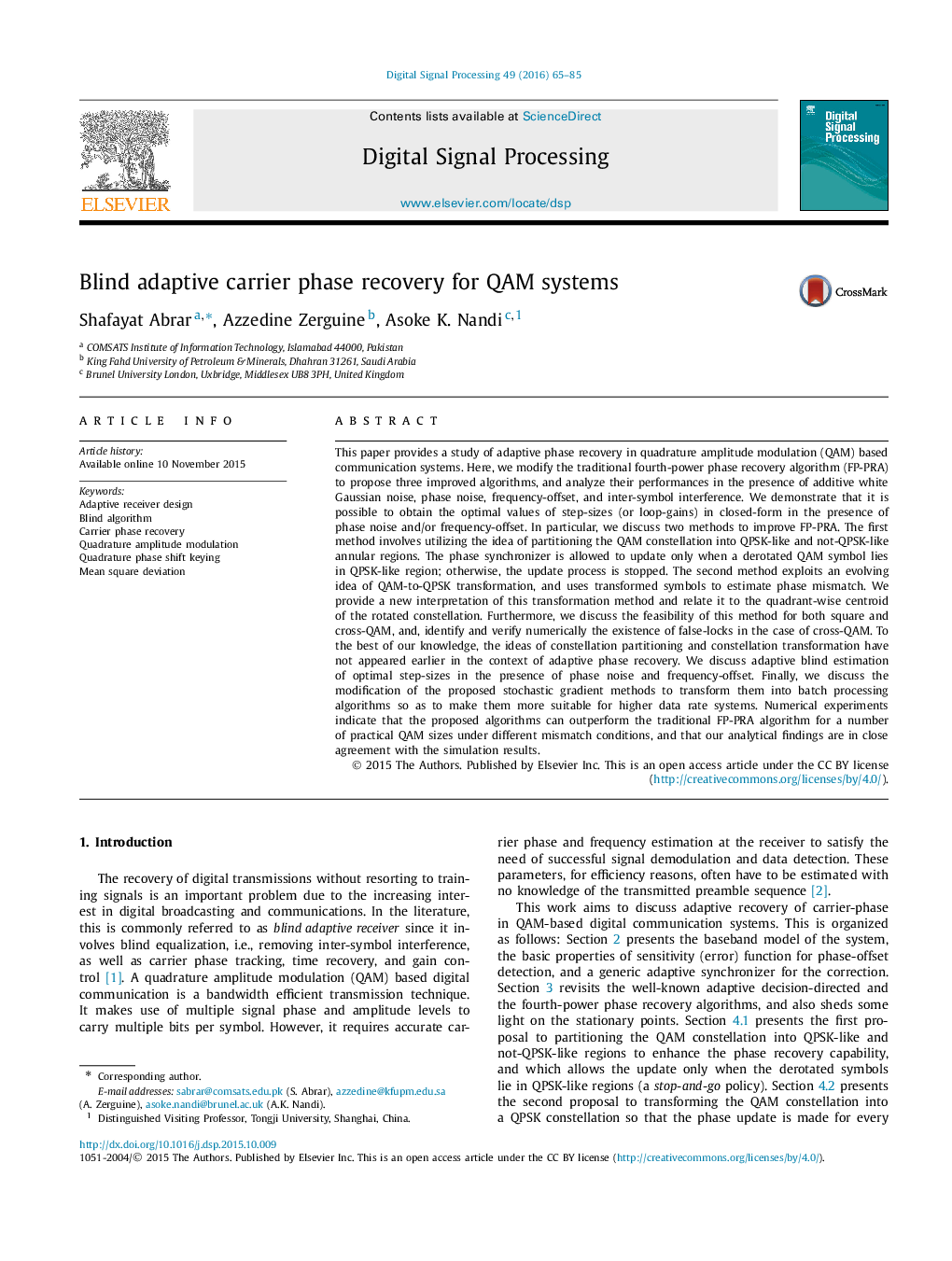| Article ID | Journal | Published Year | Pages | File Type |
|---|---|---|---|---|
| 6951948 | Digital Signal Processing | 2016 | 21 Pages |
Abstract
This paper provides a study of adaptive phase recovery in quadrature amplitude modulation (QAM) based communication systems. Here, we modify the traditional fourth-power phase recovery algorithm (FP-PRA) to propose three improved algorithms, and analyze their performances in the presence of additive white Gaussian noise, phase noise, frequency-offset, and inter-symbol interference. We demonstrate that it is possible to obtain the optimal values of step-sizes (or loop-gains) in closed-form in the presence of phase noise and/or frequency-offset. In particular, we discuss two methods to improve FP-PRA. The first method involves utilizing the idea of partitioning the QAM constellation into QPSK-like and not-QPSK-like annular regions. The phase synchronizer is allowed to update only when a derotated QAM symbol lies in QPSK-like region; otherwise, the update process is stopped. The second method exploits an evolving idea of QAM-to-QPSK transformation, and uses transformed symbols to estimate phase mismatch. We provide a new interpretation of this transformation method and relate it to the quadrant-wise centroid of the rotated constellation. Furthermore, we discuss the feasibility of this method for both square and cross-QAM, and, identify and verify numerically the existence of false-locks in the case of cross-QAM. To the best of our knowledge, the ideas of constellation partitioning and constellation transformation have not appeared earlier in the context of adaptive phase recovery. We discuss adaptive blind estimation of optimal step-sizes in the presence of phase noise and frequency-offset. Finally, we discuss the modification of the proposed stochastic gradient methods to transform them into batch processing algorithms so as to make them more suitable for higher data rate systems. Numerical experiments indicate that the proposed algorithms can outperform the traditional FP-PRA algorithm for a number of practical QAM sizes under different mismatch conditions, and that our analytical findings are in close agreement with the simulation results.
Related Topics
Physical Sciences and Engineering
Computer Science
Signal Processing
Authors
Shafayat Abrar, Azzedine Zerguine, Asoke K. Nandi,
